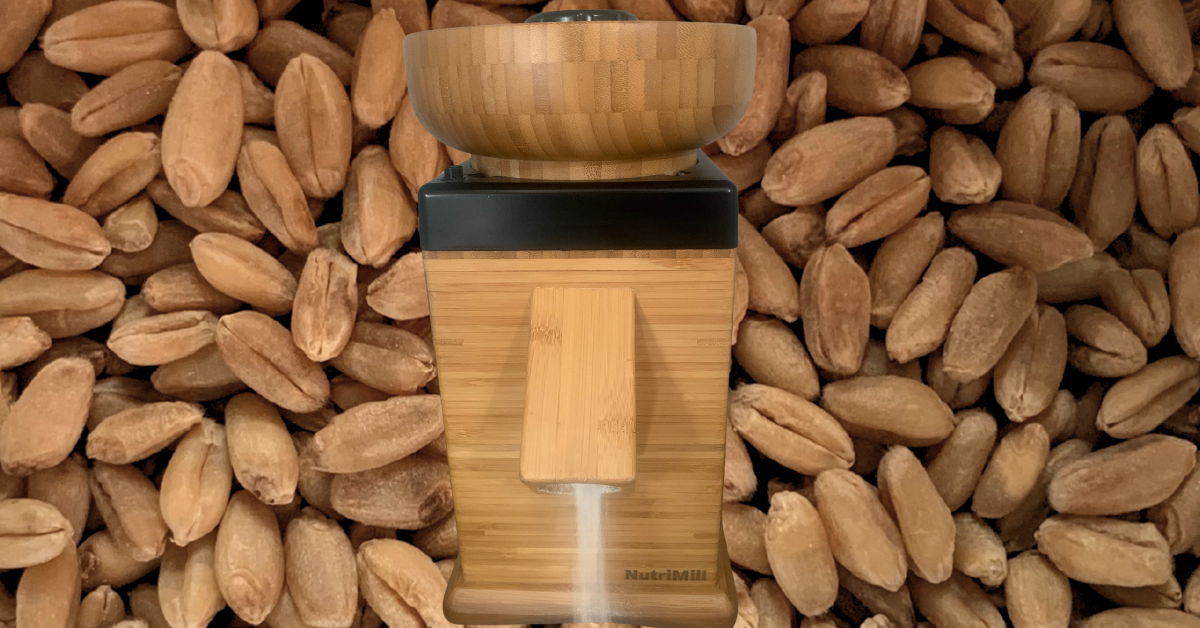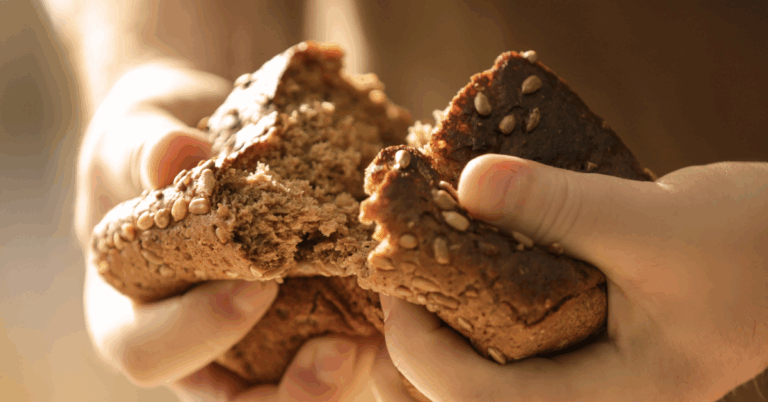Fools Making Bread: PART 2 in Bread Series
“Claiming to be wise, they become fools.” (Romans 1:22) We often tell God we know better. “Oh yeah, God, bread is good! But wait till you see what WE can do with it!!!” As the “inventors of evil” (v. 30), we have managed to reinvent bread by taking the STAFF OF LIFE and turning it into the TRASH OF LIFE. Through modern processing, wheat no longer nourishes and sustains but instead causes a myriad of health problems.
Hindsight has proved that we were indeed FOOLS. Our brilliant processing techniques to make bread ‘better’ has left us with deteriorating health. According to the Oxford English Dictionary, a ‘fool’ is a person whose behavior suggests a lack of intelligence, common sense, or good judgement. God provides us with common sense by revealing his created order through cause and effect. I see that now more than ever. As our family strives to better understand the science of food, the cleaner our diet becomes, and the more magnified the negative effects of refined, processed foods become. Our bodies yell at us, and it doesn’t take more than a little common sense to say, ‘I probably shouldn’t eat that again.”
People often associate eating bread with bloating, weight gain, blood sugar spikes, and skin issues. That’s because the bread we are eating today is an empty, lifeless shadow of REAL bread. White bread doesn’t even hold a candle to the depth and nutrition of the kind of bread that Jesus was referring to when He said, “I am the bread of life.” It’s a complete counterfeit. It might look like bread and smell like bread, but it’s a lie. I can’t help but assume that these are the ‘deceptive delicacies’ we are warned about in Proverbs 23:3:
‘When you sit down to eat with a ruler, observe carefully what is before you, and put a knife to your throat if you are given to appetite. Do not desire his delicacies, for they are deceptive food.’ –Proverbs 23:1-3
It was commonplace for the very wealthy (namely royalty) to have their flour sifted to produce the fluffiest and most delectable breads, cakes, pastries and desserts. Afterall, the bran and the germ weighed down the flour and made it denser. Common people didn’t have the margin in their day to do such frivolous things, and they wouldn’t dare remove those precious nutrients available to nourish their family. So, sifted flour quickly became associated with wealth and status. But ironically, it was the poor living like true kings!
Let me unpack that for you…
So, there are three major parts of a wheat berry: the endosperm, the bran, and the germ. Up until the 1900’s, most people ate bread that contained all three of these parts, freshly ground into a raw flour. But once the steel roller mill was invented in the late 1870’s, it became simple and efficient to sift out the bran and the germ – not only making that ‘privileged’ flour of the upper class affordable for all but also deeming the white flour shelf-stable, as it is the fatty acids in the germ that cause the flour to oxidize and go rancid. No need to go to the mill every few days! By the 1920’s, picking up white flour from the grocery market became the norm.
With this newfound processing technique, the millers had a lot of leftover bran and germ. They soon realized that they could sell the ‘by-products’ as animal feed – multiplying their profits! This sounds like a producer’s DREAM, but we soon found it to be a nightmare for the consumer. Deficiency-related issues emerged so quickly that it was easily pegged back to the newfound wheat processing techniques. Beriberi, pellagra, and anemia were just a few of the illnesses that became widespread, and the government began to step in to insist something be done. But money talks, and the millers weren’t willing to lose out on the profits they gained from the animal feed. And so began the process of enrichment! They eventually agreed to add back the main vitamins that were causing these issues, but unfortunately for us, it was only a fraction of what was removed, and they were all added back synthetically – not the way God made them! Through enrichment, they may have been able to silence the brewing epidemics, but we are still dealing with eczema, obesity, diabetes, heart disease, diverticulitis, hiatal hernias, appendicitis, and other health issues associated with these missing vitamins!
Did you know that prior to all this processing, the wheat berry contains 40 of the 44 essential nutrients for life?? Unfortunately, virtually ALL of that nutrition is in the bran and the germ. Yes, the parts being sifted out and going to the animals! We now know that what remains in that white, shelf-stable flour – the endosperm – ends up being nothing more than carbs/starch by the end of the process.
Here’s one more truth bomb for you, and the final nail in the coffin for me. Once the wheatberry is broken open 90% of the nutrients oxidize out within 72 hours. So, in just THREE DAYS, even raw flour (that contains the bran and the germ), is virtually devoid of nutrients.
You may be thinking, “Well, I don’t buy SIFTED flour. I just get the flour that they sell at the grocery store! I don’t think this applies to me.” Guess what? That IS sifted flour, and I can assure you it takes way more than 3 days to get it onto those shelves. All-purpose flour is sifted. Yes, even organic, unbleached. (I know…I thought I was buying the healthy stuff, too.) And I’ve never known any premade goodies (i.e. crackers, cookies, pastries, etc.) or breads to be made with anything other than white flour. It still boggles my mind that us common people don’t even have access to what we need to produce nutrient-dense bread. I have yet to find wheatberries on the shelf at any of our local grocery stores. It seems like you have to jump through hoops just to find what you need to make real bread.
I remember reading some of this information, and thinking, “Okay! I believe it!! I’m in!….But what does this look like practically? How do I implement this into my life?”
We now know that it is necessary for our flour to be freshly milled and unsifted in order to get optimal nutrition AND we need to use that flour in a timely manner to avoid losing all those incredible vitamins. So, the solution? We just need to find a local wheat mill!!………I know, good luck with that! But thankfully companies like Nutrimill, Mockmill, and Komo have manufactured wheat mills designed for home use!
I go through all the things to consider when investing in a grain mill in my course called EASY Sourdough using 100% Freshly Milled Whole Grain Wheat Berries, but if you aren’t there yet, you can take a peek at the most comprehensive Grain Mill Buying Guide that I have found. As for wheat berries, those can be ordered online. My favorites are Azure Standard and The Farmer’s Storehouse. I can highly recommend both of these companies as we have used their wheat berries and have been very pleased with the quality of their wheat!
So that’s it for this post but hang with me as we walk through one more major consideration in this massive topic of bread! Till next time… Keep chewing, Ladies 😊






Thank you! Yah has been speaking this truth to my heart! I’m excited to begin the journey of REAL bread making❤️. Thank you for sharing your wisdom and truth! Blessings!
I am excited for you, Tanya! I love how He teaches us spiritual truths through the practicalities of life 🙂